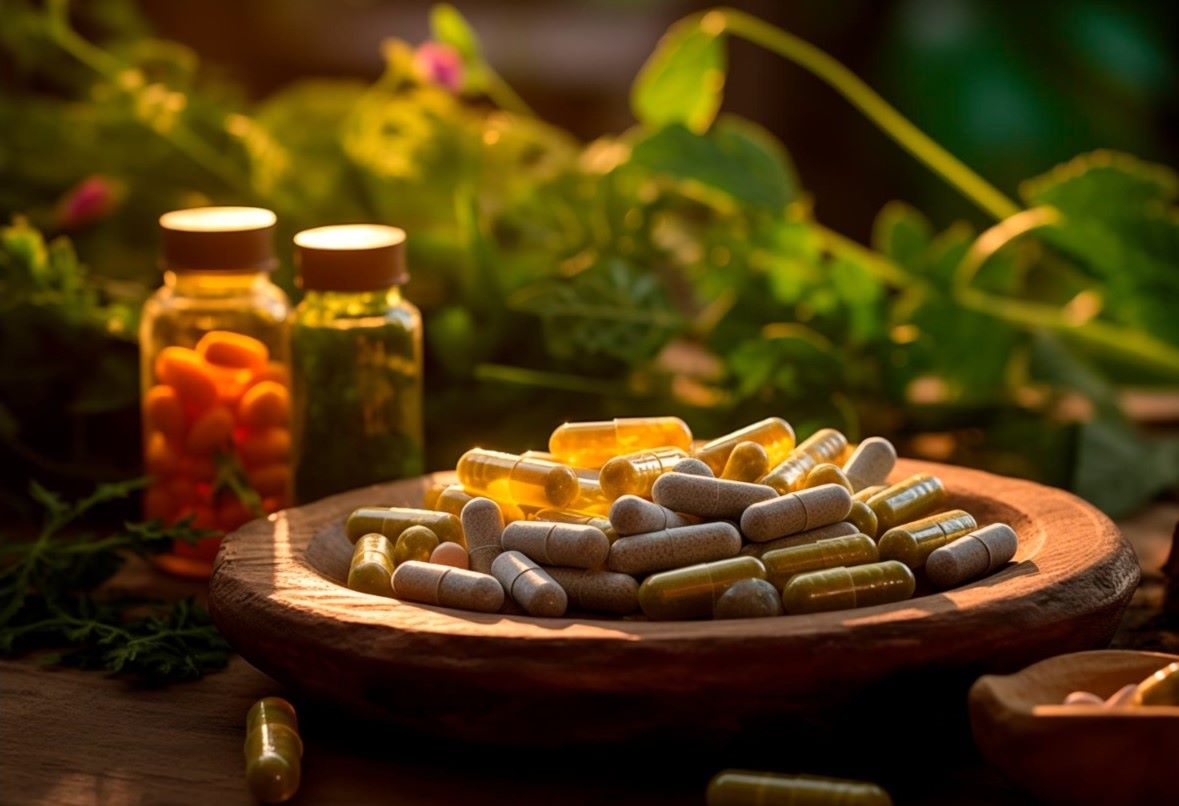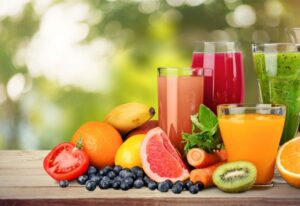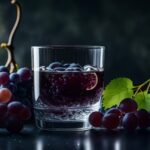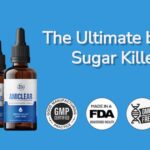Table of Contents
Introduction
In today’s world, where antibiotic resistance and bacteria growth are major concerns, many people are turning to natural antibiotics like garlic, honey, and oregano oil as homemade alternatives or home remedies. These natural antibiotics have been used for centuries to combat infections, yeast infections, and sinus infections.
You’ll discover the top 12 natural antibiotics in this guide, including ginger, turmeric, manuka honey, and essential oils like thyme and oregano – powerful natural substances with antibiotic properties that were utilized by our ancestors before modern antibiotics. Learn how to harness the healing power of these natural remedies for boosting immunity and fighting bacteria growth.
Garlic
Antimicrobial Properties
Garlic possesses potent antimicrobial properties due to its active compounds like allicin, ajoenes, and allyl sulfides. Fresh garlic extract (FGE) has displayed evident inhibition against Candida albicans and methicillin-resistant Staphylococcus aureus (MRSA), but weaker inhibition against Pseudomonas aeruginosa. The synergism of fluconazole and itraconazole with FGE on C. albicans yielded larger inhibition zones compared to using these antifungals alone (P < 0.01). Similarly, combining cefotaxime and ceftriaxone with FGE enhanced their efficacy against P. aeruginosa, producing larger inhibition zones than using antibiotics without FGE (P < 0.01).
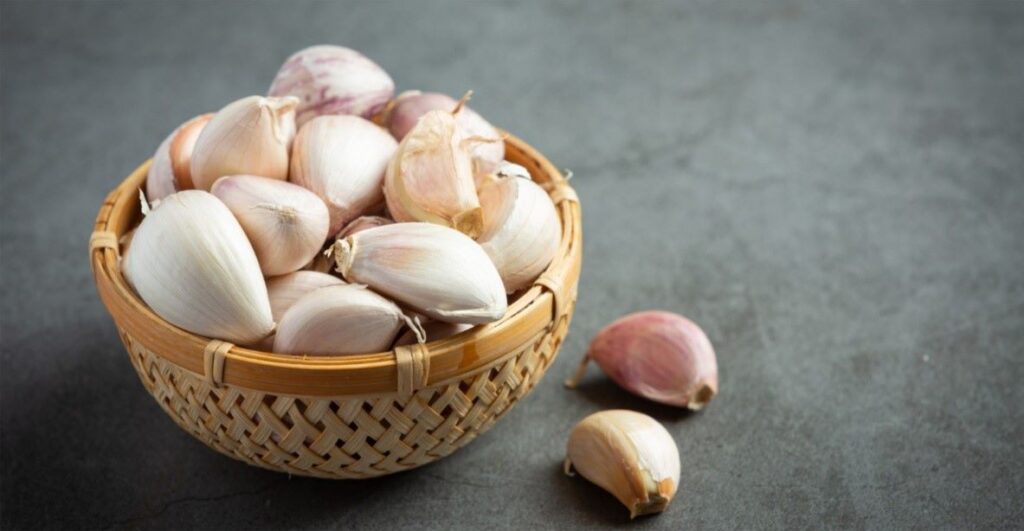
Allicin: The Key Compound
The antibacterial activity of garlic is primarily attributed to the compound allicin, which is formed when garlic is chopped or crushed. Allicin can target and inactivate enzymes in microbial cells by forming disulfide bonds with their sulfhydryl groups. This mechanism allows allicin to be effective against a wide range of pathogens, including bacteria, viruses, parasites, and fungi.
Garlic Varieties and Efficacy
Studies have shown that hard neck garlic extract exhibited a larger zone of inhibition (24mm) against Streptococcus mutans and Lactobacillus acidophilus compared to soft neck garlic extract (18mm) and chlorhexidine mouthwash (17mm). These differences in antibacterial activity between garlic varieties may be due to factors like geographic origin, soil, climate, and chemical composition. Garlic, especially the hard neck variety, has potential therapeutic use for dental caries and other oral infections.
Honey
Antibacterial Properties
Honey has been utilized as a natural antibiotic since ancient times due to its potent antibacterial properties. Its antibacterial activity stems from several factors, including hydrogen peroxide production, low pH, high osmolarity, and the presence of non-peroxide components like methylglyoxal. Honey exhibits broad-spectrum antibacterial activity against both Gram-positive and Gram-negative bacteria, including antibiotic-resistant strains such as MRSA and VRE.
Manuka Honey: A Potent Antimicrobial
Among the various types of honey, manuka honey has been extensively studied and recognized for its potent broad-spectrum antibacterial activity. Manuka honey is rated on a Unique Manuka Factor (UMF) scale, which reflects the concentration of antimicrobial compounds like methylglyoxal (MGO). With a minimum UMF of 10+, Manuka Honey is considered therapeutically potent and can be used for wound and burn healing, treating skin conditions, soothing coughs/sore throats, and improving digestive health. Additionally, manuka honey possesses anti-inflammatory properties that can help ease pain and inflammation.
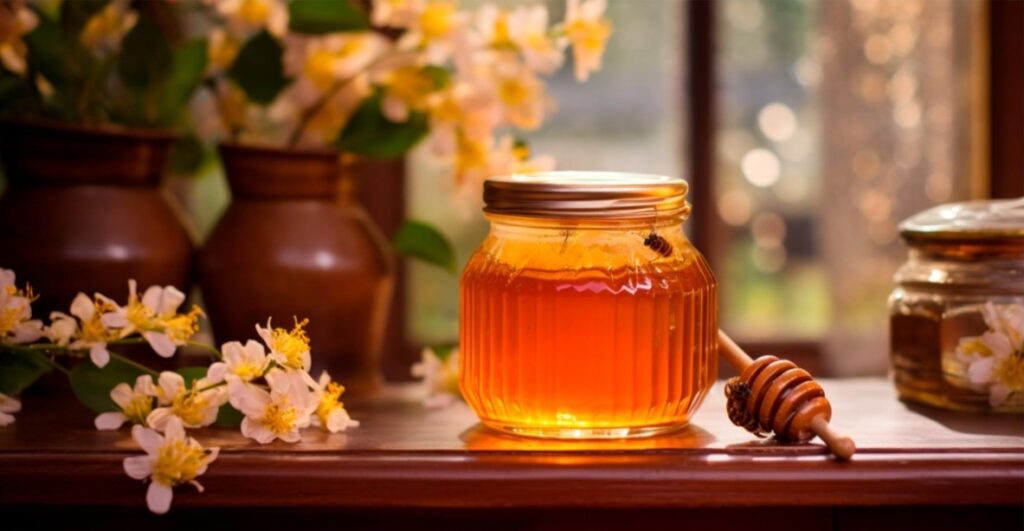
Therapeutic Applications
- Topical Use: Honey can be applied topically to treat infected wounds, burns, and skin ulcers, as it promotes healing and prevents infection.
- Internal Use: Honey can also be taken internally to treat infections, although potential side effects like allergic reactions, increased blood sugar from large quantities, and interactions with certain medications should be considered.
Ginger
Antimicrobial Properties
Ginger possesses potent antimicrobial properties and can effectively inhibit a variety of bacteria, including Streptococcus mutans, Enterococcus faecalis, Staphylococcus species, and Lactobacillus species. Its active compounds like gingerol, paradol, shogaol, and zingerone have shown antimicrobial effects against bacteria, fungi, and mycobacteria.
Phytochemical Composition
- Phenolic Compounds: Ginger extracts contain various phenolic compounds like quercetin, gallic acid, cinnamic acid, p-coumaric acid, and syringic acid, which contribute to its antioxidant and antimicrobial activities.
- Bioactive Constituents: The main chemical components of the ginger essential oil include terpenes like zingiberene, α-bisabolene, α-farnesene, α-sesquifelenolene, and α-curcumene, as well as phenolic compounds like gingerol, paradols, and shogaol.
Pharmacological Activities
Ginger (Zingiber officinale) and its active compounds exhibit various pharmacological activities, including:
- Antioxidant effects
- Anti-inflammatory effects
- Anti-tumor effects
- Antimicrobial effects
- Anti-diabetic effects, with ginger extracts showing blood glucose-lowering effects in animal models
- Neuroprotective properties, with compounds like 6-shogaol inhibiting inflammation and oxidative stress
- Gastroprotective, hepatoprotective, and anti-emetic effects
While ginger is recognized as a natural antibiotic with multiple beneficial properties, prescription antibiotics remain the most effective and necessary option in many cases, especially for preventing the spread of infectious diseases, preventing conditions from becoming more serious, speeding recovery, and preventing complications. However, the growing threat of drug-resistant bacteria means that research into natural antibiotics like ginger is increasing, and these traditional remedies may contribute to the development of new, effective medications.
Echinacea
Antibacterial and Antiviral Properties
Echinacea has an antibacterial effect on respiratory bacteria and may possess antiviral properties. It could help treat respiratory tract infections in both children and adults, potentially preventing the unnecessary use of antibiotics. This is a Native American medicinal plant that has been used for over 400 years to treat infections and wounds and as a general ‘cure-all’.
Several laboratory and animal studies suggest that echinacea contains active substances that boost immune function, relieve pain, reduce inflammation, and have antiviral effects. Whether echinacea helps prevent or treat the common cold remains controversial, but some studies have shown it can reduce the severity and duration of cold symptoms when taken at the first sign of illness.
Echinacea Products and Dosages
Echinacea is available in various forms including extracts, tinctures, tablets, capsules, and ointments. However, studies have found that many echinacea products do not contain the labeled amount of active ingredients or are mislabeled. Typical dosages for treating the common cold with echinacea are 5-20 mL of echinacea extract taken 2-10 times per day at the first sign of symptoms.

Precautions and Interactions
- Echinacea should not be taken by people with certain medical conditions like tuberculosis, leukemia, autoimmune disorders, or those on immunosuppressant medications, as it may interact with these conditions/medications.
- Echinacea may interact with some medications like econazole (an antifungal) and caffeine, increasing their effects.
Efficacy in Children
A herbal medicine (Echinaforce® Junior tablets) was investigated for its efficacy in preventing respiratory tract infections (RTIs), RTI complications, and reducing antibiotic usage in children aged 4-12 years. The study found that:
- Echinacea prevented 32.5% of RTI episodes
- Reduced the number of children requiring antibiotic treatment by 76.3%
- Reduced the total number of antibiotic treatment days by 80.2% compared to the control group
Echinacea significantly prevented influenza and enveloped virus infections and reduced RTI complications by 65% compared to the control group. The study concludes that Echinacea (Echinaforce® Junior) is effective in preventing RTIs, reducing associated antibiotic usage, and preventing RTI complications in children.
Essential Oils
Potent Antimicrobial Properties
Essential oils have shown significant antimicrobial properties against a variety of microorganisms, including bacteria, fungi, viruses, and parasites. The antimicrobial activity of essential oils is influenced by their composition, functional groups present in the active components, and synergistic interactions between components. The mechanism of action involves disruption of the cell membrane and leakage of critical molecules and ions, leading to cell death.
Key Antimicrobial Components
Major antimicrobial components of essential oils include terpenes, terpenoids (e.g., thymol, carvacrol, linalool), and phenylpropenes (e.g., eugenol, cinnamaldehyde). Some potent essential oils and their antimicrobial properties are:
- Clove essential oil may possess a strong inhibitory effect against Staphylococcus aureus and has potential as a new antibacterial agent.
- The antimicrobial effect of oregano oil may be due to carvacrol, making it effective against Streptococcus mutans.
- Thyme essential oil, particularly the thymol chemotype, exhibits potent bacteriostatic activity against a wide range of Gram-positive and Gram-negative bacteria, as well as antifungal activity.
Enhanced Efficacy and Synergy
Nano-encapsulation of essential oils can enhance their antimicrobial properties by improving chemical stability, solubility, and controlled/sustained release, leading to increased bioavailability and efficacy against multidrug-resistant pathogens. Encapsulated essential oils have shown superior antimicrobial activity compared to free essential oils, with lower minimum inhibitory concentrations (MICs) and minimum bactericidal concentrations (MBCs) against various microorganisms. Synergistic combinations of essential oils, their components, and antibiotics have been explored as a strategy to overcome antimicrobial resistance.
Other Natural Antibiotics
Oregano Oil of Oregano
Oregano and its oil possess potent antibacterial properties that can help combat various infections and digestive disorders. It is particularly effective against yeast infections and may aid in weight loss.
Raw Apple Cider Vinegar (ACV)
Raw, unfiltered apple cider vinegar (ACV) exhibits antibiotic and antiseptic properties. It can be beneficial for weight management, lowering cholesterol levels, and potentially reducing cancer risk. ACV can also be used as a topical disinfectant.
Turmeric and Honey
Turmeric, when combined with honey and applied topically, can help protect the body against infections. This natural remedy has been used for centuries to combat various ailments.
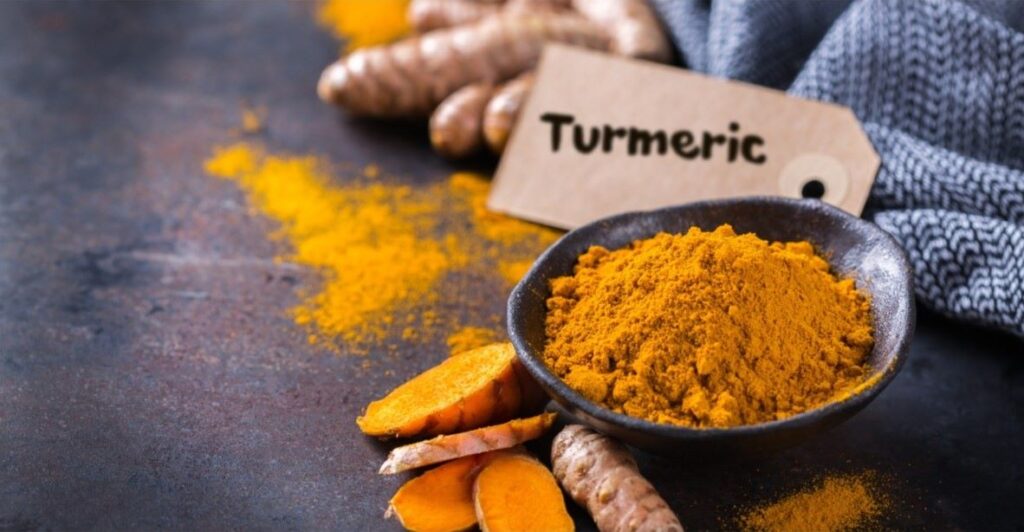
Other Potent Natural Antibiotics
- Grapefruit Seed Extract (GSE): Effective against over 800 forms of viruses, bacteria, fungi, and parasites. GSE is rich in antioxidants and can boost immunity.
- Cabbage: Containing sulfur compounds, cabbage is a cancer-fighting food that can also aid in weight management, digestion, and provide vitamin C.
- Extra Virgin Coconut Oil: Possessing antifungal and antimicrobial properties, coconut oil can boost the immune system, balance thyroid function, lower cholesterol and blood sugar levels, and improve brain function.
- Fermented Foods: Unpasteurized cabbage, pickles, and probiotic yogurts are fermented foods that benefit the intestinal tract and fight bacteria and cancer cells.
- Colloidal Silver: A natural antibiotic that inhibits the growth of harmful bacteria by targeting a crucial enzyme. However, overuse of colloidal silver can be toxic.
Incorporating these natural antibiotics, along with a healthy diet, regular exercise, and chiropractic care, can contribute to a healthier lifestyle and improved overall well-being.
FAQs
What is considered the most effective natural antibiotic? The most effective natural antibiotics include garlic, known for its preventive and curative powers, honey, recognized for its wound-healing and antimicrobial properties, ginger, echinacea, goldenseal, clove, and oregano. These natural substances have been used across various cultures due to their health benefits.
Which herb is comparable to amoxicillin in its effects? Oregano, or oil of oregano, is comparable to amoxicillin due to its antibacterial properties. It is commonly used in cooking but is also beneficial for health, aiding in chronic digestive disorders, yeast infections, and even weight loss.
Which herb is considered the most potent antibiotic? Clove, scientifically known as Syzygium aromaticum from the Myrtaceae family, is considered one of the strongest antibiotic herbs. It is highly regarded for its antimicrobial and antioxidant properties.
Does apple cider vinegar act as a natural antibiotic? Yes, apple cider vinegar has antibacterial properties. Studies, including test tube experiments, have shown that it is effective at killing harmful bacteria such as Escherichia coli and Staphylococcus aureus, the latter of which is responsible for staph infections.
References
[1] https://www.dobsonbaychiro.com/blogs/natural-antibiotics.html
[2] https://www.healthline.com/health/natural-antibiotics
[3] https://www.ncbi.nlm.nih.gov/pmc/articles/PMC4458355/
[4] https://www.ncbi.nlm.nih.gov/pmc/articles/PMC6454914/
[5] https://asm.org/articles/2019/july/old-wives-tales-and-garlic-as-an-antibiotic-are-mi[
[6] https://www.medicalnewstoday.com/articles/321108
[7] https://www.ncbi.nlm.nih.gov/pmc/articles/PMC3609166/
[8] https://www.ncbi.nlm.nih.gov/pmc/articles/PMC6589292/
[9] https://www.webmd.com/a-to-z-guides/manuka-honey-medicinal-uses
[10] https://www.ncbi.nlm.nih.gov/pmc/articles/PMC4106649/
[11] https://www.ncbi.nlm.nih.gov/pmc/articles/PMC9166953/
[12] https://www.intechopen.com/chapters/69729
[13] https://www.mountsinai.org/health-library/herb/echinacea
[14] https://www.ncbi.nlm.nih.gov/pmc/articles/PMC8028575/
[15] https://www.rxlist.com/supplements/echinacea.htm
[16] https://www.ncbi.nlm.nih.gov/pmc/articles/PMC5622393/
[17] https://www.ncbi.nlm.nih.gov/pmc/articles/PMC6612361/
[18] https://www.healthline.com/health/antibacterial-essential-oils
